Fujifilm unveils the Instax Wide 400 – the big print instant camera for big occasions
Bigger, wider, nicher
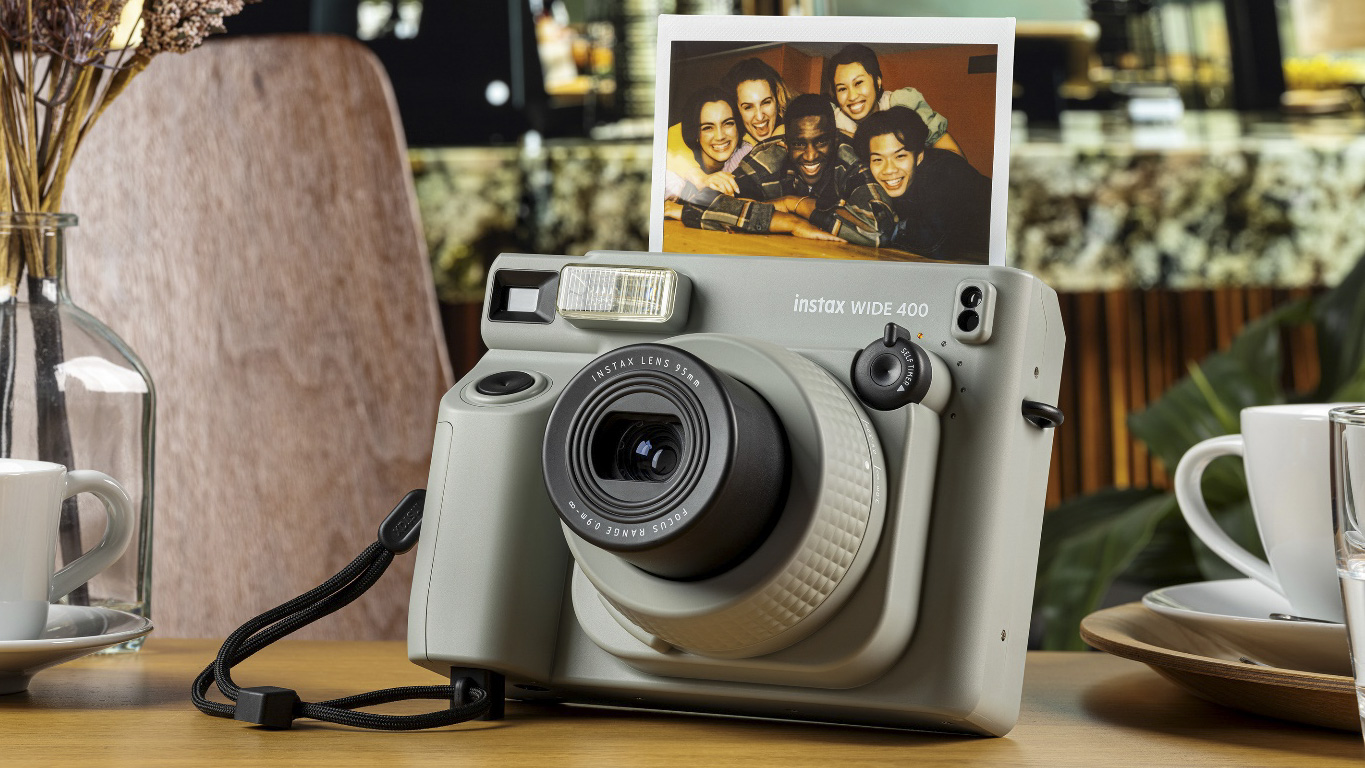
Fujifilm has unveiled its latest instant camera, the Instax Wide 400, which is a straight up replacement for its 10 year old Instax Wide 300. The new model shoots onto Instax Wide paper, which is the largest of three Instax formats, the other two being Mini and Square.
Instax film formats are identical in height, but vary in width: the image area of Instax Wide prints measures 99 x 62mm (3.9 x2.44in), while Square is 62 x 62mm (2.44 x2.44in) and Mini is 46 x 62mm (1.8 x2.44in). Being twice the width of Mini, you can comfortably grab larger group photos with the Instax Wide 400.
We think the Instax Wide 400 is a logical choice for events and can imagine it being super popular with guests at weddings and the like. However, bigger prints means a bigger camera. The Instax Wide 400 is a positively gargantuan device better suited to big occasions, and if you want a walk around camera you might consider smaller format options, like the Instax Mini 12.
The new camera is available in sage green only and costs $149.99 / £129.99 (Australia pricing TBC). Packs of Instax Wide film start at $18.99 / £16.99 for a twin pack of 10 regular color sheets. You can also buy black and white wide Instax film from $13.99 / £9.99 for a single pack of 10 sheets.
I was at the launch event of the Instax Wide 400 and I had enough time to formulate first impressions, so what did I think?
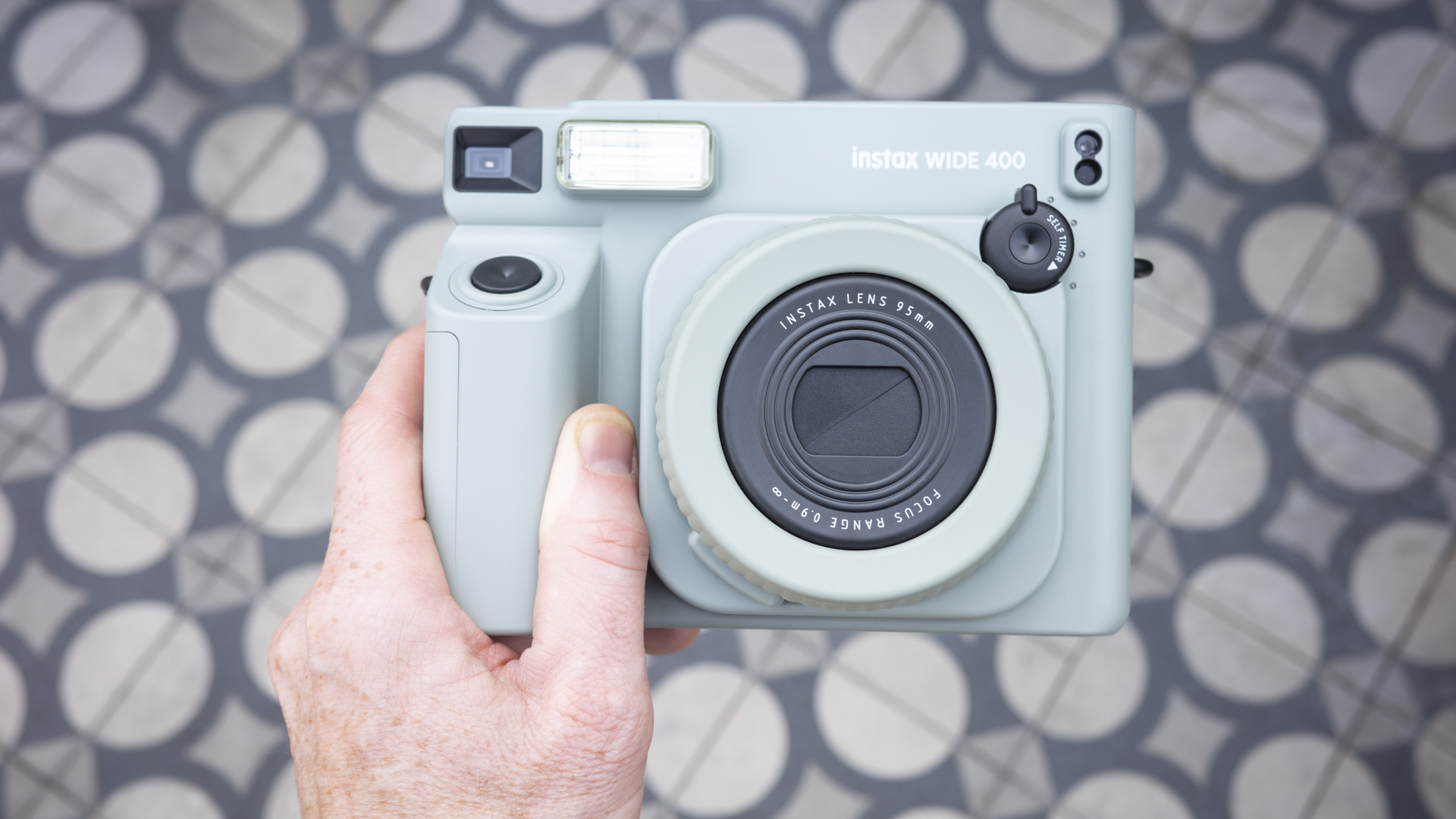
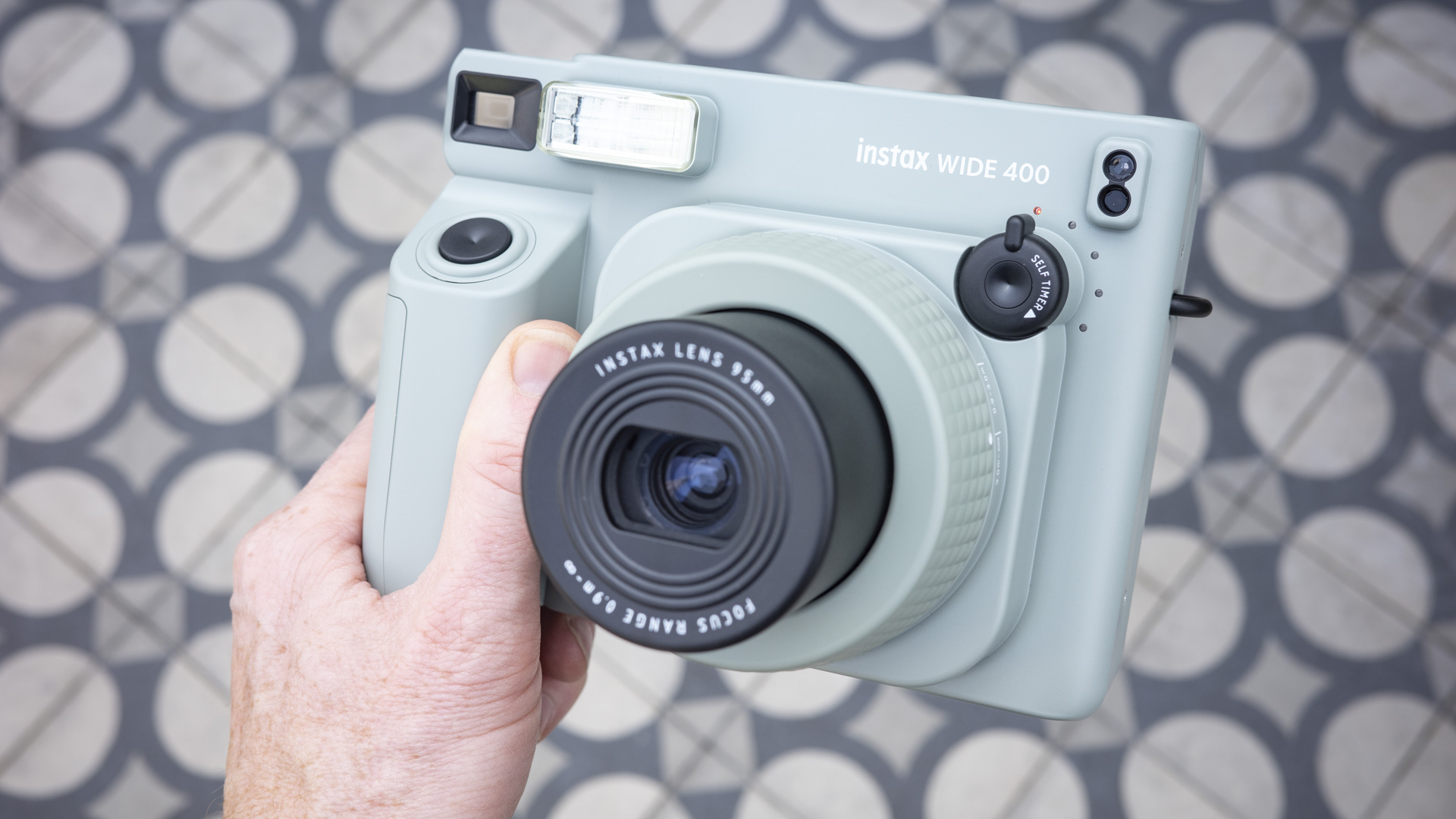
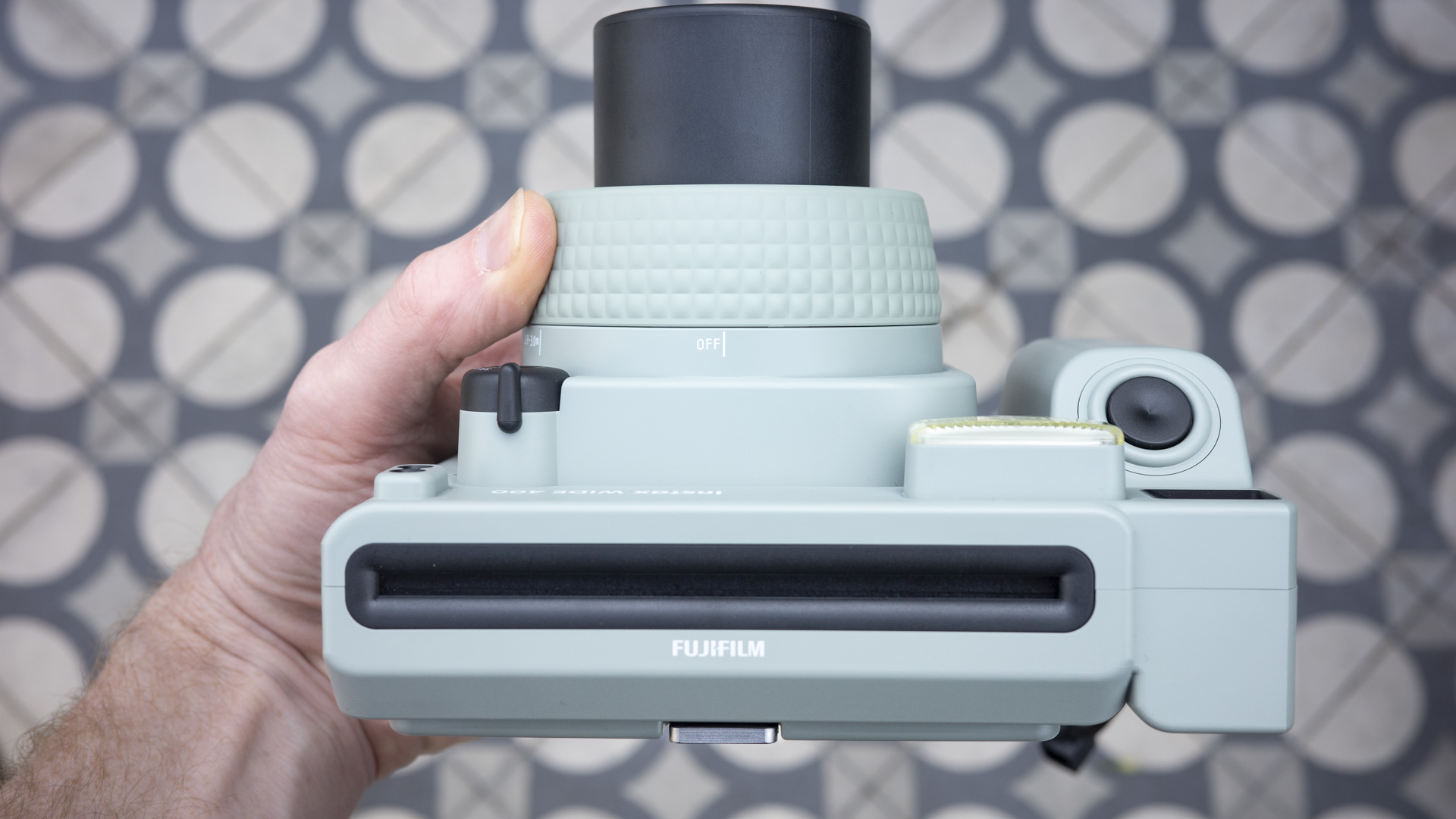
Bigger, wider, nicher
A new Instax Wide camera is a rarity – this is a niche format. You get the largest Instax print size available, in landscape format, suitable for vistas, group shots and perhaps travel selfies. I prefer Instax Square, which strikes a healthy balance between size and intimacy, with prints that are easily displayed in groups.
There's also no getting around how big the Instax Wide 400 is – you are holding a printer with a lens on it, after all. Yet despite its chunky proportions, this is a pretty simple and automated device, unlike the recent Instax Mini 99 for creative photographers.
Sign up for breaking news, reviews, opinion, top tech deals, and more.
The camera offers two focus groups: 0.9m to 3m (2.95 to 9.85ft) and 3m to infinity, a self timer crank with a countdown light that indicates how long until the shot is taken. There's also an always-on, built-in flash.
The Instax Wide 400 has a lovely and bright optical viewfinder that gave me an idea of perspective, although for accurate composition I'd place my central subject towards the bottom left hand corner of the viewfinder. If I line up my shot as seen through the finder, subjects appear in the top right instead.
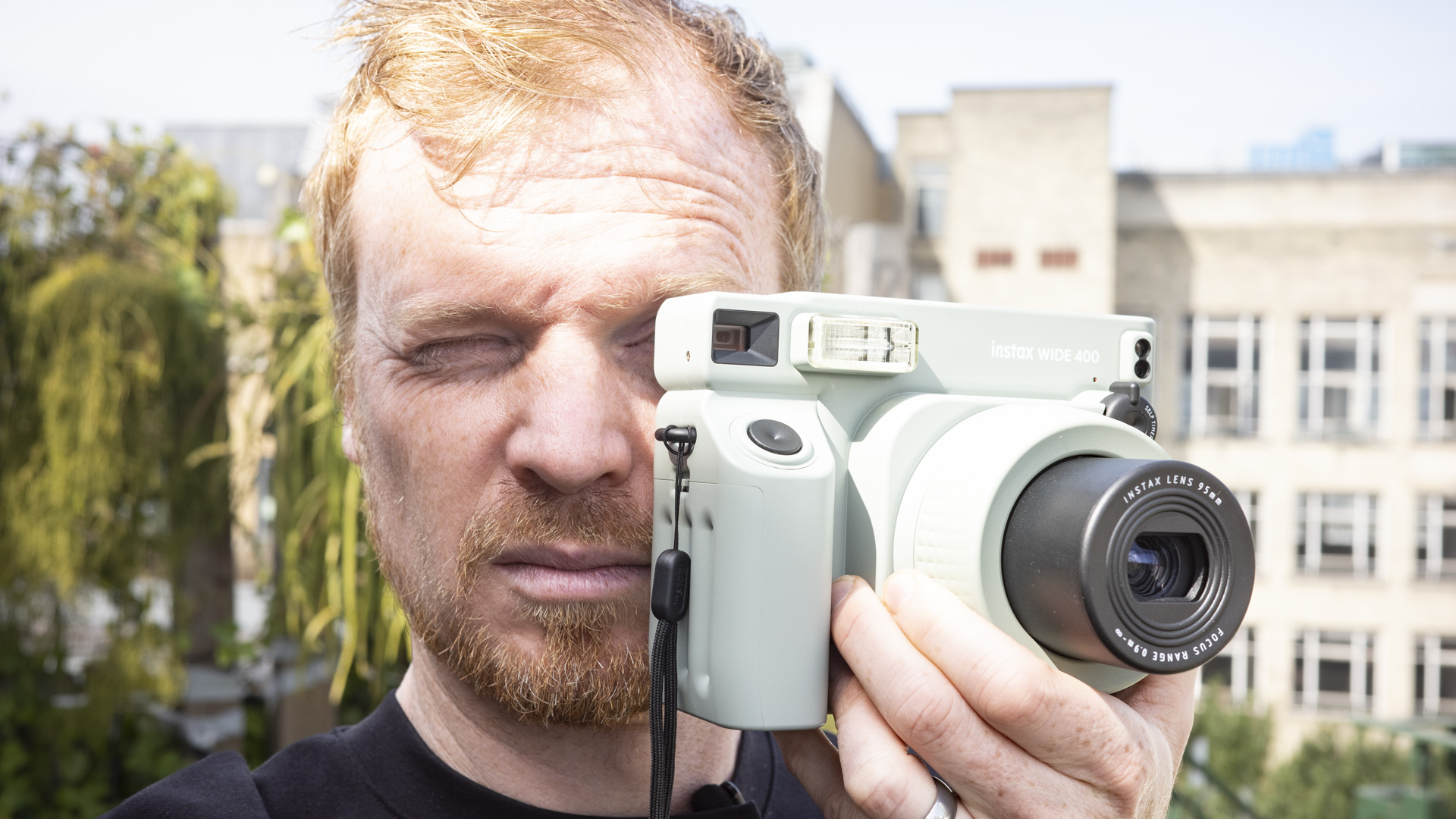
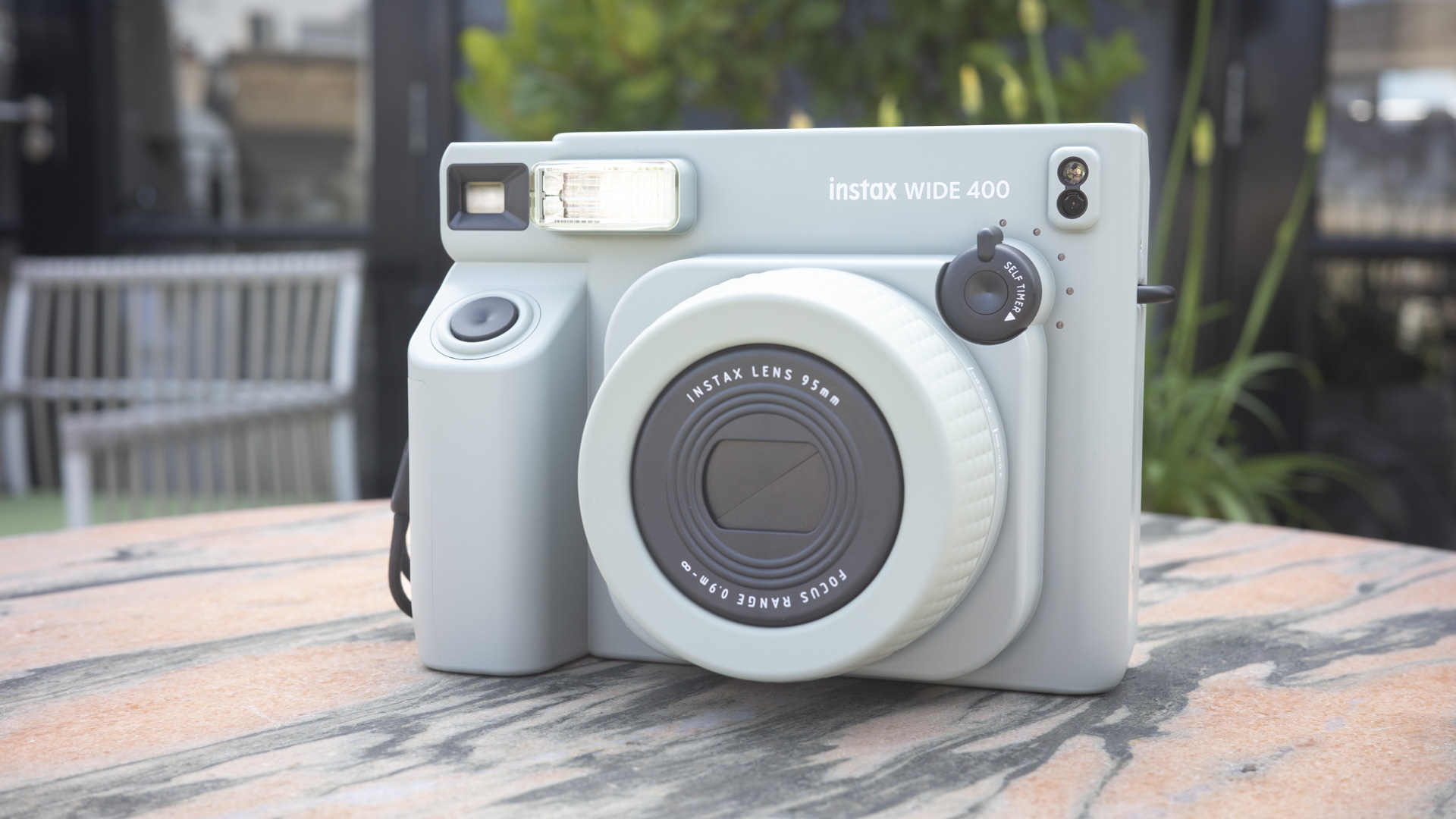
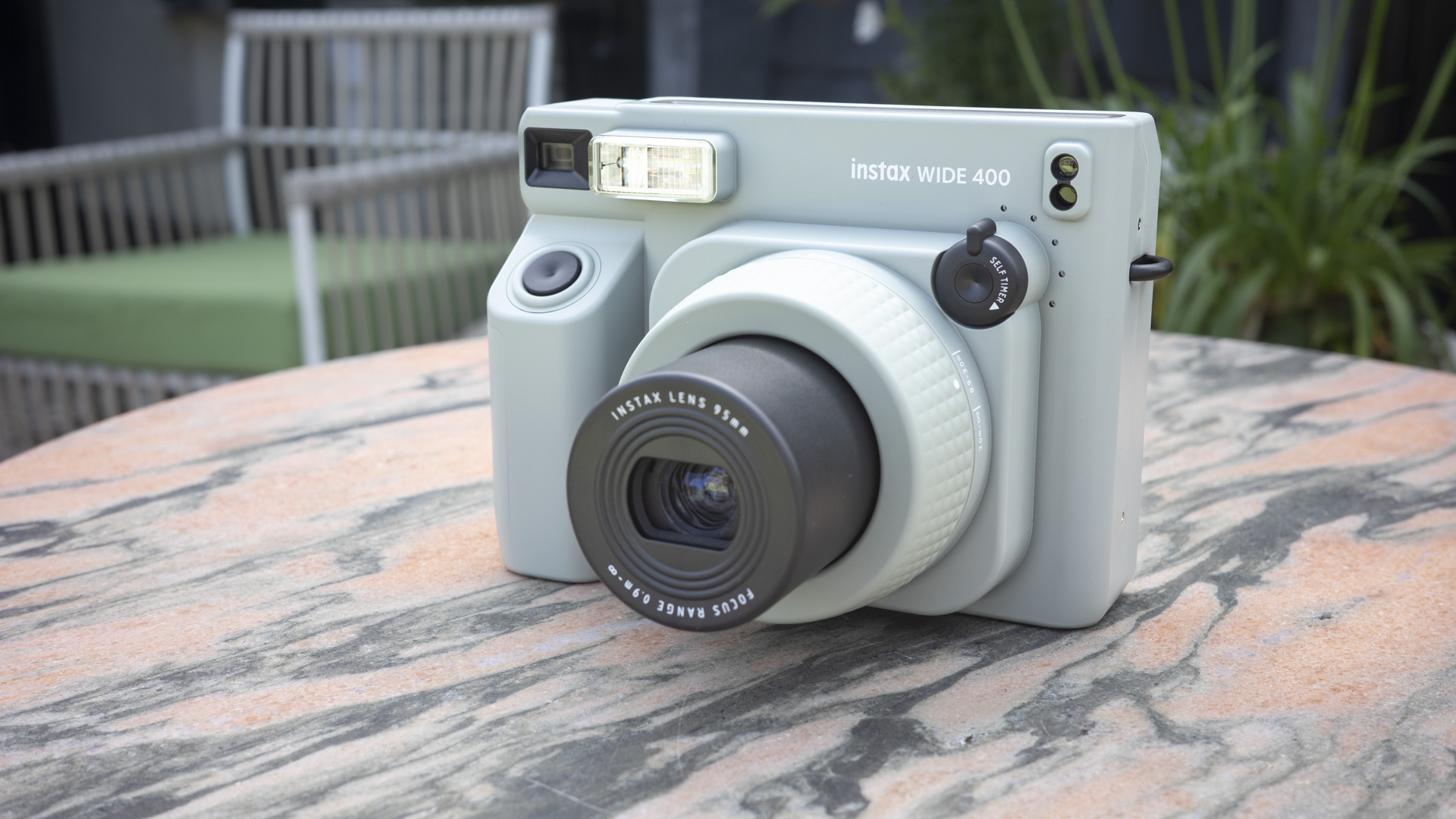
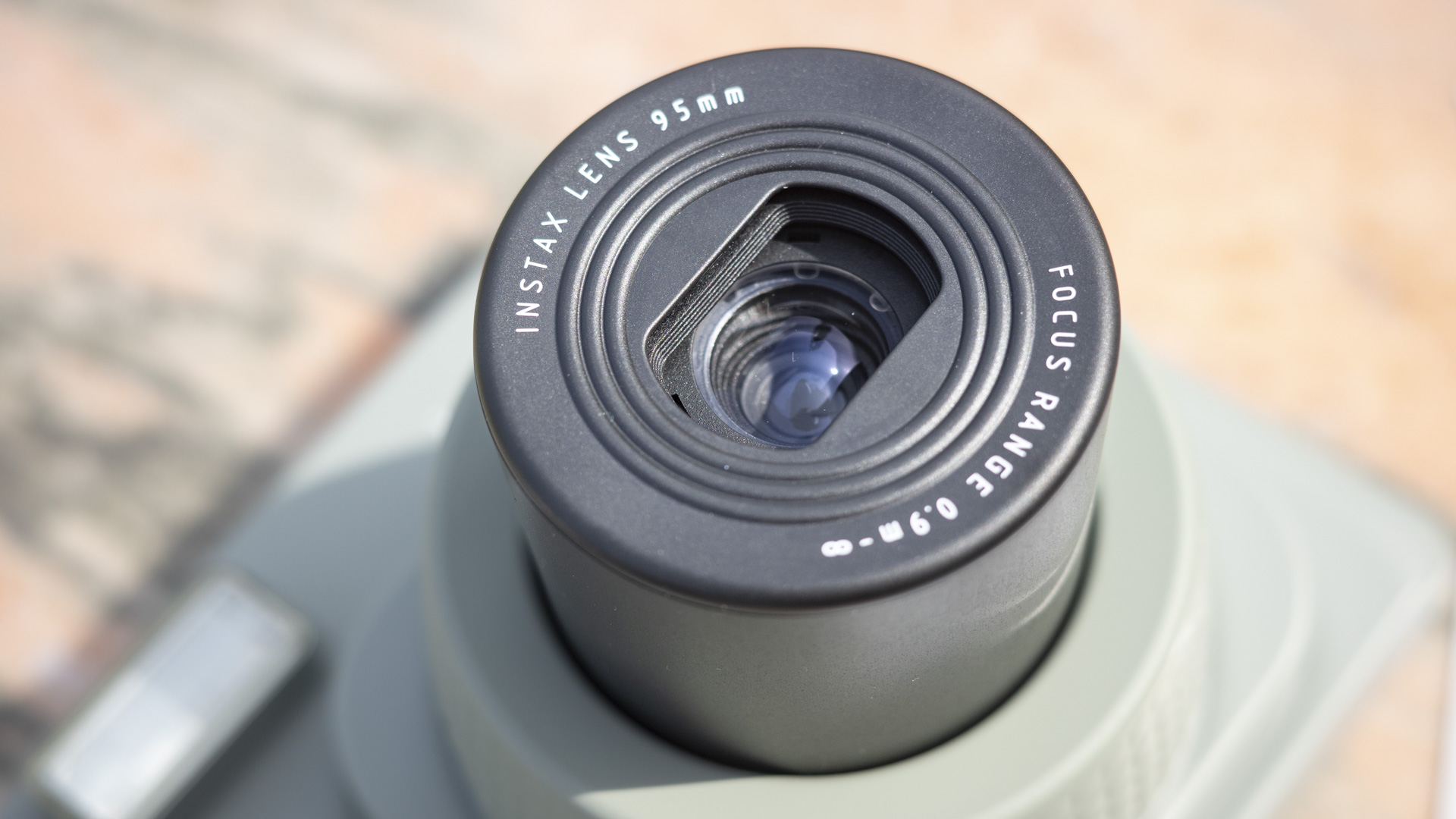
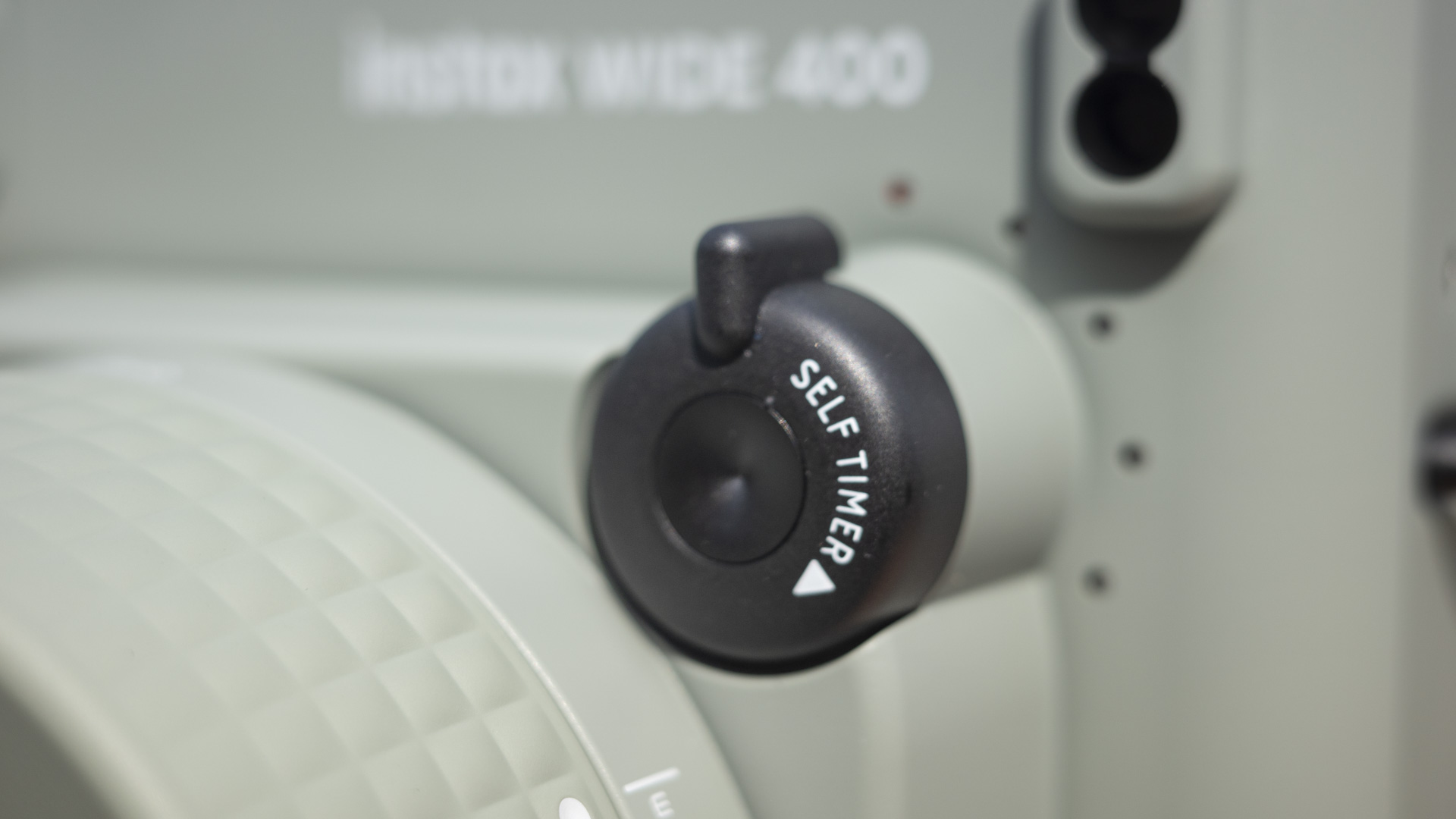
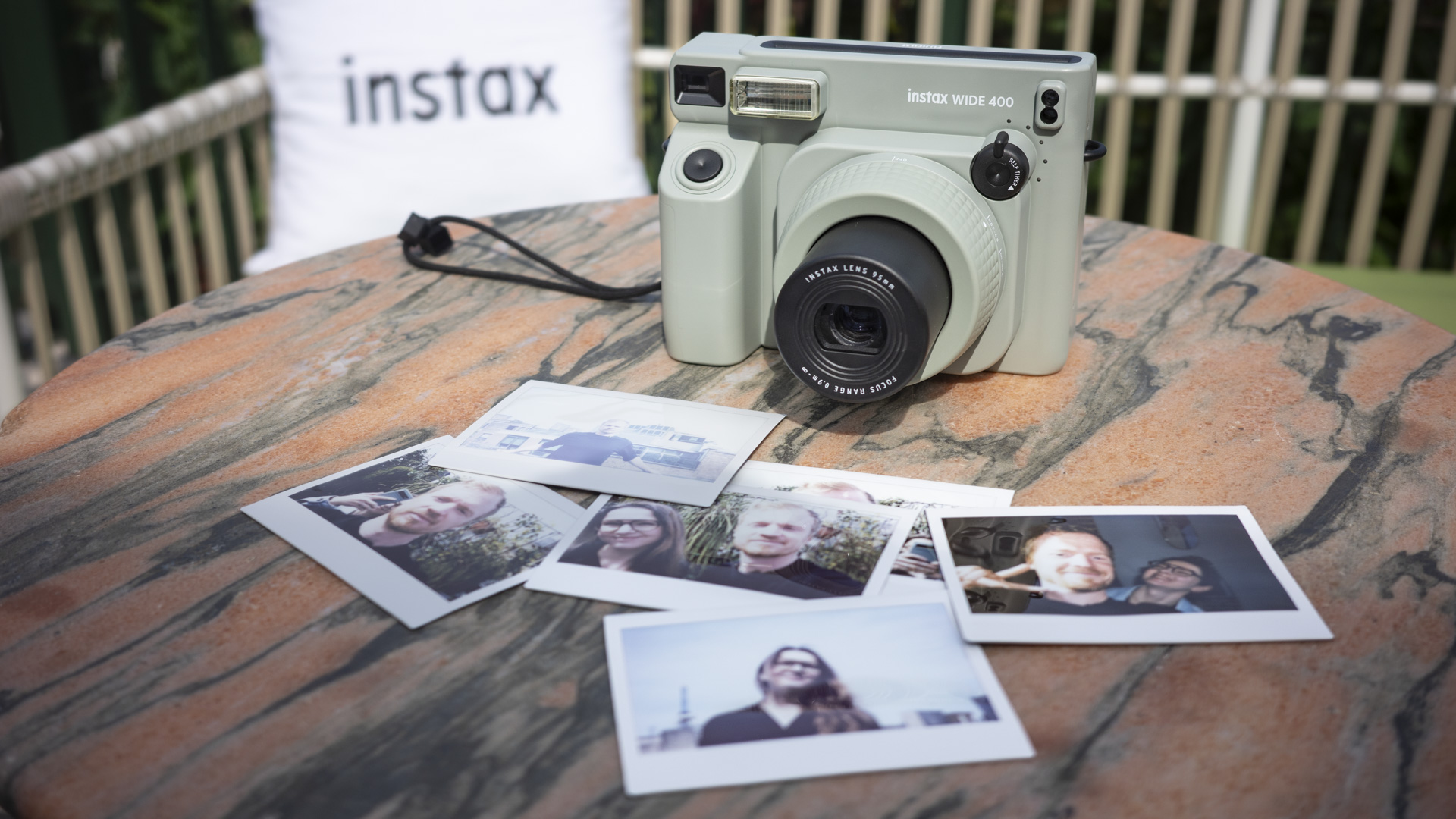
There's no selfie mirror – a clip on accessory – like you find on most of today's other Instax cameras, but here the mirror is superfluous. Holding the camera at arm's length and pointing it back in my direction was enough.
If you like the Instax Wide format but don't like the idea of this beefy camera, the Fujifilm Instax Link Wide printer is a solid alternative. You can connect to the portable printer via Bluetooth using the Instax app on your phone, with the advantage of being able to choose which photos you print. However, you lose the immediate experience that comes with an Instax camera.
As with all Instax cameras, prints have a lovely vintage quality to them, while the cost of paper beats pricier Polaroid rivals. We'll be sharing a full review of the Instax Wide 400 soon.
You might also like

Tim is the Cameras editor at TechRadar. He has enjoyed more than 15 years in the photo video industry with most of those in the world of tech journalism. During his time as Deputy Technical Editor with Amateur Photographer, as a freelancer and consequently editor at Tech Radar, Tim has developed a deeply technical knowledge and practical experience with cameras, educating others through news, reviews and features. He’s also worked in video production for Studio 44 with clients including Canon, and volunteers his spare time to consult a non-profit, diverse stories team based in Nairobi. Tim is curious, a keen creative, avid footballer and runner, and moderate flat white drinker who has lived in Kenya and believes we have much to enjoy and learn from each other.